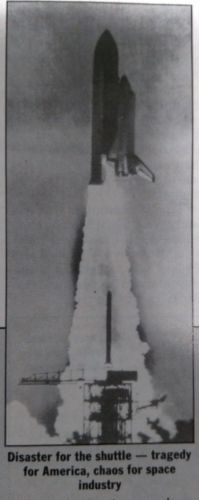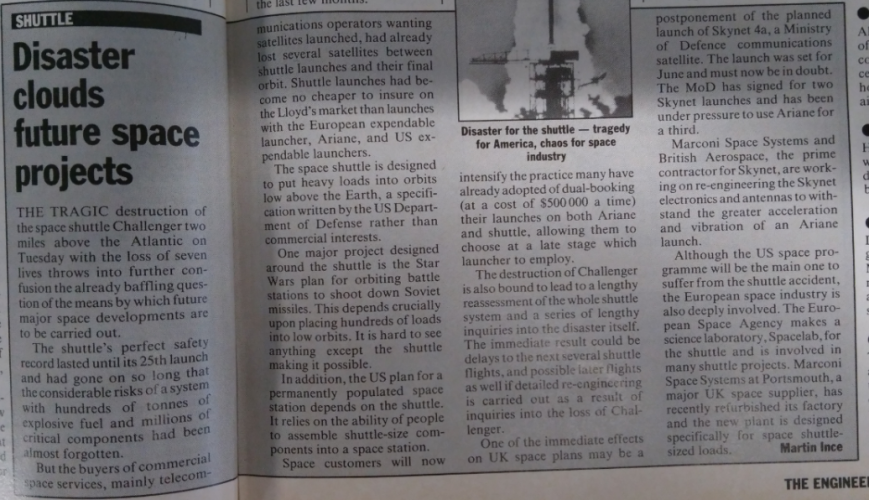Click to enlarge
The dramatic failure was later traced back to a faulty O-ring that was not designed for the temperatures of the January launch. Despite knowledge of the O-ring's potential flaws, NASA managers had failed to address them, and reportedly ignored warnings from engineers about the dangers of launching in the cold conditions.

After 24 successful shuttle missions, it was claimed by some - including the resulting Rogers Commission - that a degree of complacency had set in at NASA regarding the inherent dangers of space flight. Just two days after the incident, The Engineer wrote: "The shuttle's perfect safety record lasted until its 25th launch and had gone on so long that the considerable risks of a system with hundreds of tonnes of explosive fuel and millions of critical components had been almost forgotten."
Challenger's failure resulted in a 32-month suspension of the shuttle programme, during which time plans for an escape system were drawn up. However, it was found that such a system was not feasible due to complexity and cost.
The mission, which was Challenger's tenth, had attracted particular attention due to the presence on board of Payload Specialist Christa McAuliffe, who was due to become the first teacher in space. It's estimated that 17 per cent of Americans watched the launch live, with around 85 per cent becoming aware of the tragedy within an hour of its occurrence.
Seventeen years later, in January 2003, the shuttle programme would suffer its second loss, with Columbia breaking up on re-entry to Earth. It was found that a piece of foam broke off the vehicle during launch, damaging the heat shield on the leading edge of Columbia's left wing. As with Challenger, all seven crew members were lost.












Construction industry lags in tech adoption
Are these the best people to ask "Insights from 2,000 Industry Leaders"? - what would their customers views be like (perhaps more...